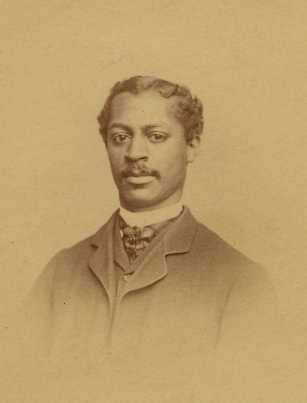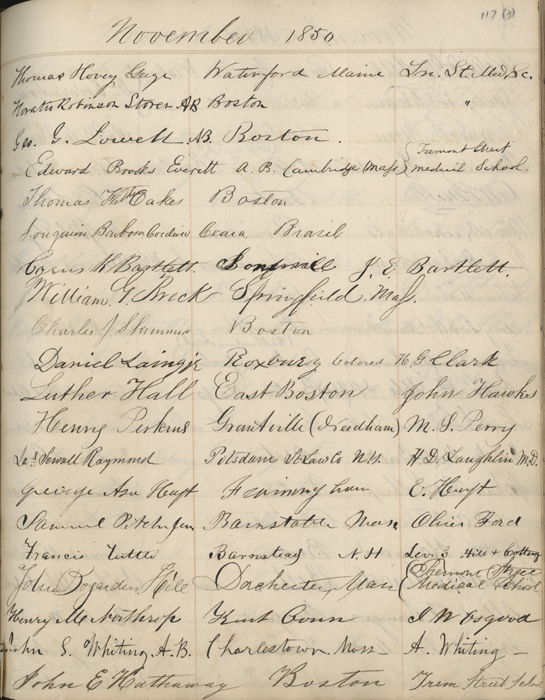Introducing Diversity
In the autumn of 1850, just a few months after the Webster murder trial, a second great upheaval at the Medical School occurred when the Faculty of Medicine considered the question of admitting a woman and three African-American men. The woman, Harriot Kesia Hunt, ultimately withdrew her application, but the three men—Martin Robison Delany, Issac Humphrey Snowden, and Daniel Laing, Jr.—were admitted and attended lectures during the winter term. A majority of the students protested their presence, however, and the Faculty voted it “inexpedient” to allow them to continue their studies. The minutes show the debates on these two issues. It was not until after the Civil War that African-Americans completed the course of study and were first graduated from Harvard—Edwin C. J. T. Howard and Thomas Graham Dorsey from the Medical School and Robert Tanner Freeman from the Dental School—in 1869.
Part of a set of photographs of members of the first graduates of the Harvard Dental School, this image of Robert Tanner Freeman (d. 1873) is particularly interesting. Dr. Freeman was born in Washington, D.C., and was the son of former slaves from North Carolina. After attending classes in the Harvard Medical School, he became, in 1869, the first African-American to graduate from the Harvard Dental School and is believed to be the first to be awarded a dental degree in the United States.
During the 19th century, every incoming medical student signed this volume at the beginning of the academic session and so agreed to follow the statutes of Harvard University and the direction of the Faculty of Medicine. On the page on the right can be seen the signature of Daniel Laing, Jr., one of the three African-American students who enrolled in the Medical School during the autumn of 1850.
Harriot Kesia Hunt’s autobiography describes her attempts to study medicine at Harvard. After practicing medicine in Boston for a number of years, she applied to the Medical School in 1847 and then again in 1850 and was the first woman to apply for education at Harvard. The Medical Faculty, though questioning the validity of conferring a degree on a woman, agreed to admit her to lectures, but Hunt’s illness and a protest from the students at the Medical School caused her to withdraw her application. In 1853, the Female Medical College in Philadelphia conferred an honorary medical degree on Harriot K. Hunt.
The issue of admitting women to Harvard Medical School continued to provoke controversy until June 5, 1944, when the Harvard Corporation voted to admit women to the Medical School in the fall of 1945.
Dr. George Franklin Grant (1847-1910) of Oswego, New York, received a degree from the Harvard Dental School in 1870 and then joined the faculty as an authority on mechanical dentistry. He was the first African-American faculty member at the university and remembered today for his invention and patenting of the golf tee.




